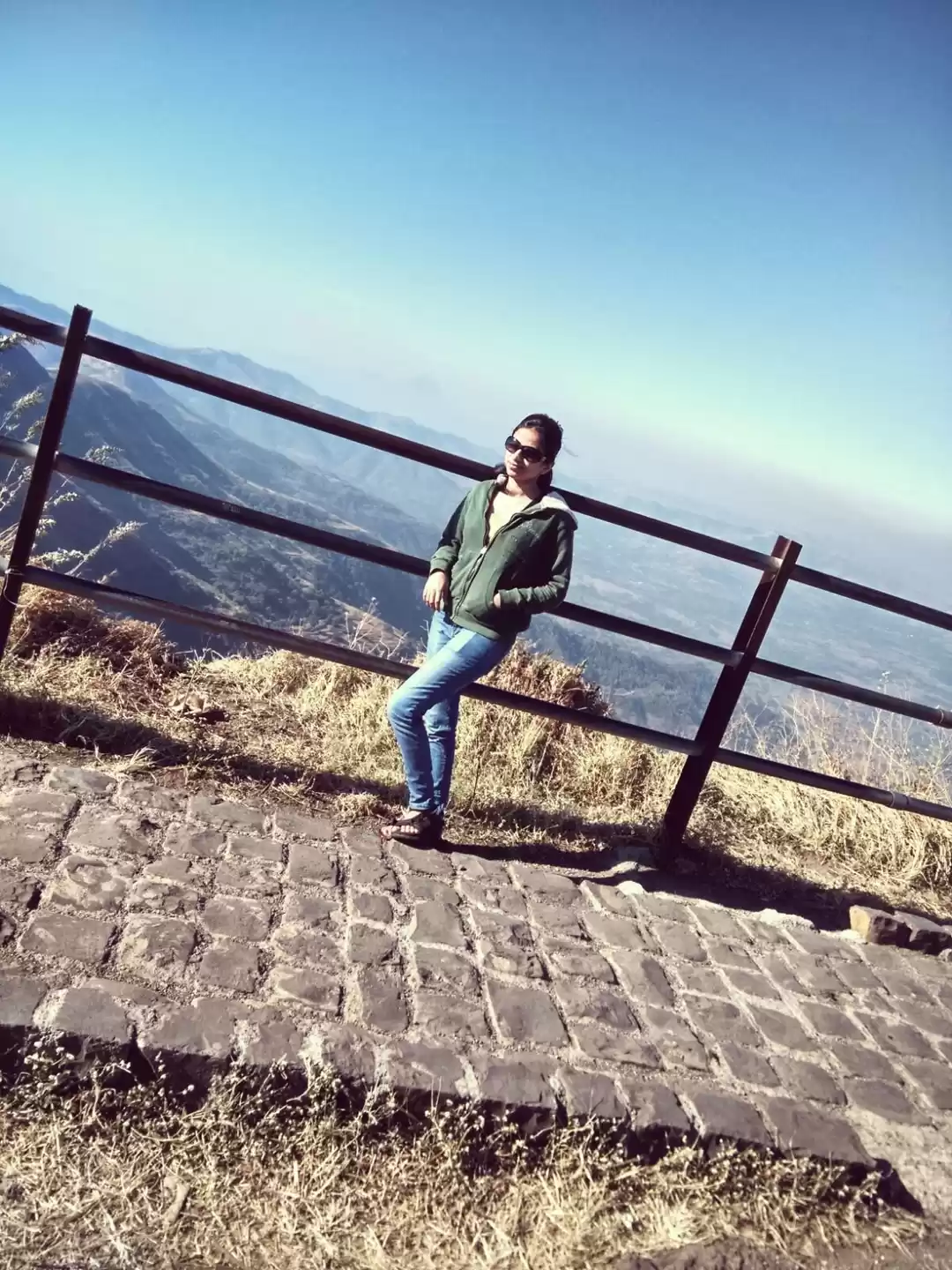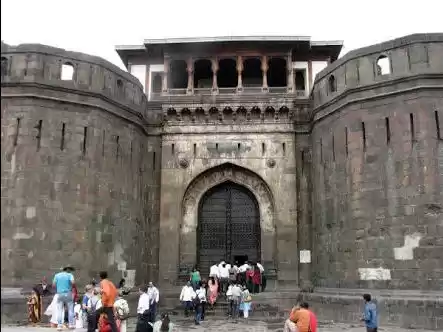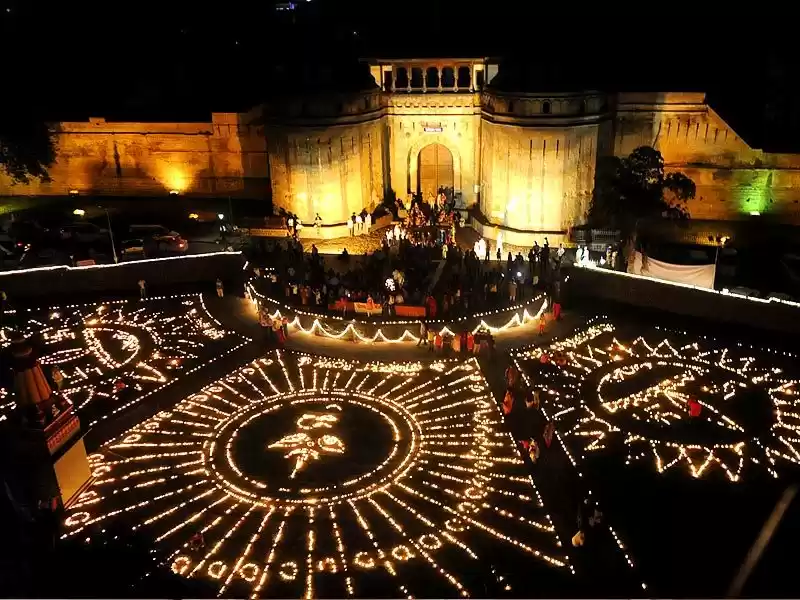Shaniwar Wada is a historical palace and fort in Pune, Maharashtra, that was once the seat of power of the Peshwa dynasty of the Maratha Empire. Built in the 18th century, this magnificent structure witnessed the rise and fall of the Peshwas, as well as many events that shaped the history of India.
Today, Shaniwar Wada is a popular tourist attraction that showcases the glory and grandeur of the Maratha culture and architecture. But did you know that this palace also has a dark and haunted past?
Read on to find out more about Shaniwar Wada, its history, architecture, facts, haunted stories, light and sound show, timings, entry fee, location, how to reach, best time to visit, and places to visit near Shaniwar Wada.
History of Shaniwar Wada
Shaniwar Wada has a rich and fascinating history that spans over two centuries. Here are some of the highlights of its origin and evolution:
Origin and construction:
Shaniwar Wada was built by Peshwa Bajirao I, the prime minister of the Maratha Empire under Chhatrapati Shahu I. He laid the foundation stone of the palace on January 10, 1730, which was a Saturday (Shaniwar in Marathi). The construction took two years and cost Rs. 16,110 at that time. The palace was designed by an architect named Kashiwadi from Rajasthan.
Peshwa rulers and residents:
Shaniwar Wada became the residence and headquarters of the Peshwas, who were the de facto rulers of the Maratha Empire. The palace was home to seven Peshwas: Bajirao I, Balaji Bajirao, Madhavrao I, Narayan Rao, Raghunath Rao, Sawai Madhavrao, and Baji Rao II. Each Peshwa added new features and elements to the palace according to their taste and preference. The palace also hosted many guests and dignitaries from other kingdoms and countries.
Events and incidents:
Shaniwar Wada witnessed many events and incidents that had a significant impact on the history of India. Some of them are:
The romance of Bajirao and Mastani:
Bajirao I fell in love with Mastani, the daughter of a Rajput king from Bundelkhand. He married her despite opposition from his family and society. He built a separate palace for her near Shaniwar Wada called Mastani Mahal. Their love story is one of the most famous and tragic in Indian history.
The murder of Narayan Rao:
Narayan Rao became the fifth Peshwa after his father Madhavrao I died in 1772. He was only 17 years old and was under the influence of his uncle Raghunath Rao and his aunt Anandibai. They conspired to kill him and take over his throne. On September 30, 1773, they sent assassins to his chamber who hacked him to death. His last words were “Kaka mala wachwa” (Uncle save me), which are still heard at Shaniwar Wada on full moon nights.
The Third Anglo-Maratha War:
The Maratha Empire faced its final defeat at the hands of the British East India Company in 1818. The last Peshwa Baji Rao II surrendered to the British after losing the Battle of Khadki. He was exiled to Bithur near Kanpur. The British took over Shaniwar Wada and used it as their barracks until 1828.
The fire of 1828: On February 27, 1828, a huge fire broke out at Shaniwar Wada that lasted for seven days. It destroyed most of the palace except for some parts like the gates, bastions, fountains, etc. The cause of the fire is still unknown. Some say it was an accident while others say it was a deliberate act by someone who wanted to erase the memory of the Peshwas.
Architecture of Shaniwar Wada
Shaniwar Wada is an example of Maratha style of architecture that combines elements from Hindu, Mughal, and Rajasthani styles. The palace covers an area of about 625 acres and has a perimeter wall that is 5 meters high and 2 meters thick. The palace has the following features and elements:

Gates and fortifications:
Shaniwar Wada has five gates that are named after the directions they face or the people they are associated with. They are:
Dilli Darwaza: This is the main gate of the palace that faces north. It is also the largest and most ornate gate. It has four doors and nine bastions. It is decorated with spikes, carvings, and paintings. It was named after Delhi, the capital of the Mughal Empire, which was the main rival of the Marathas.
Mastani Darwaza: This is a small gate that faces north-west. It was used by Mastani to enter and exit the palace. It was also used by Bajirao I to visit her at Mastani Mahal. It is also known as Ali Bahadur Darwaza after Mastani’s son Shamsher Bahadur, who was given the title of Ali Bahadur by the Mughals.
Khidki Darwaza: This is a small gate that faces east. It has a window (khidki in Marathi) above it that was used to keep an eye on the enemies. It was also used by the ladies of the palace to watch the processions and ceremonies outside. It is also known as Ganesh Darwaza after the idol of Ganesh that is installed near it.
Ganesh Darwaza: This is a small gate that faces south-east. It was used by the Peshwas and their guests to enter and exit the palace. It is named after the idol of Ganesh that is installed near it. It is also known as Narayan Darwaza after Narayan Rao, who was killed near this gate.
Jambhul Darwaza: This is a small gate that faces south. It was used by the servants and workers to enter and exit the palace. It is named after the jambhul (black plum) tree that grows near it. It is also known as Bhuyar Darwaza after a secret passage that leads to a well (bhuyar in Marathi) inside the palace.
Fountains and gardens:
Shaniwar Wada has two fountains and a garden that add beauty and charm to the palace. They are:

Hazari Karanje: This is a fountain that is located in the center of a large courtyard. It has 16 jets that spray water in different patterns and shapes. It is said that it could produce 1000 (hazari in Marathi) fountains at a time, hence the name. It was built by Peshwa Bajirao I for his beloved Mastani.
Mughal Garden: This is a garden that is located in the south-west corner of the palace. It has a rectangular shape and is divided into six sections by pathways. It has various types of flowers, plants, and trees that create a colorful and fragrant atmosphere. It was built by Peshwa Baji Rao II for his wife Mastani Bai.
Lotus Fountain: This is a fountain that is located in front of Diwan-i-Khas or Audience Hall. It has a lotus-shaped structure that sprays water from its petals. It was built by Peshwa Balaji Bajirao for his mother Kashibai.
Halls and chambers:
Shaniwar Wada has several halls and chambers that were used for different purposes by the Peshwas and their families. They are:
Diwan-i-Khas: This is the most important hall of the palace where the Peshwas held their meetings, discussions, and ceremonies with their ministers, generals, guests, and allies. It is located in the center of the palace and has a rectangular shape. It has a wooden ceiling that is painted with scenes from Ramayana and Mahabharata. It also has a silver throne that was used by the Peshwas. It also has a chandelier that was gifted by King Louis XV of France to Peshwa Baji Rao II.
Diwan-i-Aam: This is the hall where the Peshwas held their public meetings, hearings, and celebrations with their subjects, soldiers, and followers. It is located in the north-east corner of the palace and has a square shape. It has a wooden ceiling that is painted with floral motifs. It also has a gallery that was used by the ladies of the palace to watch the proceedings.
Rang Mahal: This is the chamber where Peshwa Bajirao I lived and slept with his wife Kashibai. It is located in the south-east corner of the palace and has a circular shape. It has a wooden ceiling that is painted with scenes from Krishna’s life. It also has a bed that was made of silver and gold. It is also known as Bajirao’s Bedroom.
Haunted Stories of Shaniwar Wada
Shaniwar Wada has a dark and haunted past that attracts many thrill-seekers and paranormal enthusiasts. Here are some of the spooky stories and experiences that are reported by visitors and locals at Shaniwar Wada:
Paranormal activities: Shaniwar Wada is said to be haunted by the spirits of the Peshwas and their victims who died or suffered there. Some of the paranormal activities that occur at Shaniwar Wada are:
The screams of Narayan Rao: On every full moon night, the screams of Narayan Rao are heard at Shaniwar Wada. He was the fifth Peshwa who was brutally murdered by his uncle and aunt in 1773. His ghost is believed to roam around the palace, crying for help and justice.
The sightings of apparitions and shadows: Many visitors and locals have claimed to see apparitions and shadows of people dressed in traditional Maratha attire at Shaniwar Wada. They are said to be the ghosts of the Peshwas and their families who lived and died there. Some of them are friendly while others are hostile.
The feeling of being watched or touched: Many visitors and locals have reported feeling a presence or a touch at Shaniwar Wada. They feel as if someone is watching them or touching them with cold or warm hands. They also feel a sudden change in temperature or pressure in some areas of the palace.
Ghost stories:
Shaniwar Wada is linked to many ghost stories that explain the origin and nature of its hauntings. Some of them are:
The story of Narayan Rao’s murder: This is the most famous and tragic story of Shaniwar Wada. It tells how Narayan Rao was killed by his uncle Raghunath Rao and his aunt Anandibai, who wanted to usurp his throne. They hired assassins to enter his chamber through a secret passage and stab him to death. Narayan Rao tried to escape but was caught near Ganesh Darwaza, where he was hacked to pieces. His body was taken to the river and cremated without any rites. His spirit is said to haunt Shaniwar Wada, seeking revenge and peace.
The story of Bajirao’s death: This is another sad story of Shaniwar Wada. It tells how Bajirao I died of fever in 1740 while he was away from Pune on a military campaign. He had a dying wish to see his beloved Mastani one last time, but he could not fulfill it. His spirit is said to haunt Shaniwar Wada, longing for his love and regretting his actions.
Light and Sound Show at Shaniwar Wada
Shaniwar Wada has a light and sound show that is conducted every evening in its premises. The show is a spectacular display of lights, sounds, narration, music, and effects that tell the story of Shaniwar Wada and its inhabitants. Here is some information about the show:

Timings and languages: The show starts at 7:15 pm every day except on Mondays when it is closed. The show lasts for 45 minutes and is repeated twice every evening. The first show is in Marathi while the second show is in English.
Themes and stories: The show covers various themes and stories related to Shaniwar Wada, such as its history, architecture, culture, legends, etc.
Ticket prices: The ticket prices for the light and sound show are as follows:
Adults: Rs. 25
Children (below 12 years): Rs. 15
Foreigners: Rs. 300
The tickets can be purchased at the entrance gate of Shaniwar Wada or online.
Best Time to Visit Shaniwar Wada
Shaniwar Wada can be visited throughout the year, but there are some factors that can affect your visit, such as weather and crowd conditions. Here are some suggestions on the best time to visit Shaniwar Wada based on these factors:
Weather conditions:
Pune has a tropical climate that is hot and humid in summer, wet and pleasant in monsoon, and cool and dry in winter. The best time to visit Shaniwar Wada based on weather conditions is during the winter or monsoon seasons, which last from November to February and June to September respectively.
During these seasons, the temperature is moderate and comfortable, ranging from 10°C to 30°C. The palace looks more beautiful and green during the monsoon, when the fountains and gardens are in full bloom. However, avoid visiting during heavy rains, as the roads may be flooded or slippery.
Crowd levels:
Shaniwar Wada is a popular tourist attraction that attracts many visitors throughout the year, especially on weekends and holidays. The crowd levels at Shaniwar Wada vary depending on the day and time of your visit.
The best time to visit Shaniwar Wada based on crowd levels is during the weekdays or early mornings or late evenings, when the palace is less crowded and more peaceful. You can explore the palace at your own pace and enjoy its beauty and history without any hassle.
However, avoid visiting during festivals or celebrations, such as Ganesh Chaturthi, Diwali, or New Year, as the palace may be very crowded and noisy.
Light and sound show timings:
Shaniwar Wada has a light and sound show that is conducted every evening in its premises. The show is a spectacular display of lights, sounds, narration, music, and effects that tell the story of Shaniwar Wada and its inhabitants.
The best time to visit Shaniwar Wada based on light and sound show timings is during the evening, when you can witness the magic and mystery of the palace in a different light. You can also enjoy the show in different languages, depending on your preference.
Don’t miss this awesome guide to Pune - the vibrant city that is known as the “Oxford” of Maharashtra for its cultural and educational excellence.
Places to Visit near Shaniwar Wada
Shaniwar Wada is surrounded by many other attractions that can be visited along with it. Here are some of the places to visit near Shaniwar Wada:
Dagdusheth Halwai Ganpati Temple:
This is a temple dedicated to Lord Ganesh, the elephant-headed god of wisdom and success. It is located at a distance of about 1 km from Shaniwar Wada. It is famous for its huge idol of Ganesh that is adorned with gold and jewels.

Lal Mahal:
This is a red-colored palace that was built by Shivaji Maharaj in 1630. It was the residence of Shivaji and his mother Jijabai for several years. It was also the place where Shivaji wounded Shaista Khan, the Mughal governor of Deccan, in a daring attack. The palace has a museum that displays paintings, weapons, and artifacts related to Shivaji and his era. It is located about 250 meters from Shaniwar Wada.

Raja Dinkar Kelkar Museum:
This is a museum that houses a collection of over 20,000 objects of art and craft from different parts of India. The collection was amassed by Dr. Dinkar G. Kelkar, a dentist and an avid collector, who dedicated it to the memory of his son Raja. The museum showcases various items such as sculptures, paintings, musical instruments, textiles, weapons, toys, etc. It also has a special section on Mastani Mahal, which recreates the palace of Bajirao’s lover Mastani. It is located about 1.8 km from Shaniwar Wada.
Vishram Bagh Waada Palace:
This is a palace that was built by Peshwa Bajirao II in the 19th century. It was used as a rest house and a pleasure garden by the Peshwas and their guests. It was also the place where Bajirao II signed the Treaty of Bassein with the British in 1802, which marked the end of the Peshwa rule. The palace has a three-storeyed structure with wooden pillars, arches, balconies, and windows. It also has a clock tower that was added by the British in 1878. It is located about 1.7 km from Shaniwar Wada.

Aga Khan Palace:
This is a palace that was built by Sultan Muhammad Shah Aga Khan III in 1892. It is one of the most important landmarks in Indian history as it served as a prison for Mahatma Gandhi and his wife Kasturba Gandhi during the Quit India Movement in 1942. Kasturba Gandhi and Mahadev Desai, Gandhi’s secretary, died in this palace and their samadhis are located here. The palace also has a museum that displays photos, paintings, and personal items of Gandhi and other freedom fighters. It is located about 6 km from Shaniwar Wada.
How to Reach
Shaniwar Wada is located in the heart of Pune city and is easily accessible by various modes of transport.
Whether you are coming by train, bus, flight, or bike, you can reach this historical palace and fort without any hassle. Here are some creative ways to describe how to reach Shaniwar Wada:
If you are coming by train, hop on a bus from Pune Station Bus Stop and get down at Shanipar Bus Stop. Walk for about 5 minutes and you will see the majestic Dilli Darwaza, the main gate of Shaniwar Wada. Or, if you prefer a more comfortable ride, take a taxi, auto, or bike from Pune Station Taxi Stand, Auto Stand, or Bike Rental Service and reach Shaniwar Wada in no time.
If you are coming by bus, get off at Swargate Bus Stand or Shivajinagar Bus Stand and take another bus from there to Shanipar Bus Stop. Walk for about 5 minutes and you will reach the splendid Shaniwar Wada. Or, if you want to save some time, take a taxi, auto, or bike from Swargate Taxi Stand, Auto Stand, or Bike Rental Service or Shivajinagar Taxi Stand, Auto Stand, or Bike Rental Service and reach Shaniwar Wada in a jiffy.
If you are coming by flight, take a bus from Airport Bus Stop to Pune Station Bus Stop and then follow the same directions as above. Or, if you want to avoid the traffic, take a taxi, auto, or bike from Airport Taxi Stand, Auto Stand, or Bike Rental Service and reach Shaniwar Wada in a breeze.
If you are coming by bike, ride along the scenic roads of Pune and enjoy the sights and sounds of the city. Follow the directions and routes to Shaniwar Wada from different points in Pune and look for the landmarks and signs along the way. You will find Shaniwar Wada easily as it is one of the most prominent and popular attractions in Pune.
Let's take you on a virtual trip to the historical sights of Pune through the lens of Sagnik Basu.
Shaniwar Wada is waiting for you to explore its history, architecture, culture, legends, and stories.
So, what are you waiting for? Plan your trip to Shaniwar Wada today and experience the grandeur and mystery of this heritage monument.
















































